C. David Allis, Carl Wu (Eds.)
Table of contents :
28.pdf……Page 0
Fluorescence Anisotropy Assays for Analysis of ISWI-DNA and ISWI-Nucleosome Interactions……Page 9
Fluorescein-Labeled DNA……Page 10
Instrumentation and Technical Considerations……Page 11
Scattered Light……Page 12
Emission Path Filters……Page 13
Filter Set for Use with Fluorescein……Page 15
Cuvettes……Page 17
Experimental Design for Binding Titrations……Page 18
Results of Binding Experiments……Page 19
Conclusions……Page 22
Background……Page 23
Agarose Multigel Electrophoresis……Page 24
Extending AME to In Vivo-Assembled Chromatin……Page 26
Equipment……Page 27
Multigel Preparation……Page 28
Gel Electrophoresis……Page 30
Data Analysis……Page 31
Assay for Secondary Chromatin Structure Formation……Page 32
Composition Analysis of the Genomic Fragments……Page 33
Data Interpretation……Page 34
Purity……Page 36
Buffer Components……Page 37
Positive Staining……Page 38
Shadow Casting after Drying from Glycerol (Fig. 1A)……Page 39
Negative Staining (Fig. 1B)……Page 41
CCD Cameras Versus Film……Page 43
Microscope Parameters……Page 44
Data Preparation……Page 45
Alignment and Generation of Class Averages……Page 46
Final Reconstruction Parameters……Page 47
Visualization……Page 48
SPR from ECM Images……Page 49
Electron Tomography (Fig. 1C and D)……Page 50
Specimen Preparation for Tomography……Page 51
Data Collection……Page 52
Alignment and Reconstruction……Page 53
Visualization and Analysis……Page 54
Introduction: Use of Electron Microscopy for Analysis of Large Macromolecular Complexes……Page 56
Sample Preparation for Electron Microscopy of Single Particles Preserved in Stain……Page 57
Preliminary Specimen Evaluation and Data Collection……Page 58
Analysis and Classification of 2D images……Page 59
Interpretation of the RSC Reconstruction……Page 61
Studying the RSC/Nucleosome Interaction Under EM Sample Preparation Conditions……Page 63
Examination of Unstained RSC and RSC/Nucleosome Particles……Page 67
Introduction……Page 71
Preparation of Histones……Page 73
DNA Labeling and Attachment Methods……Page 74
Preparation of Experimental Samples……Page 75
Optical Trapping System……Page 76
Experimental Control and Data Acquisition……Page 77
Data Analysis……Page 78
Force Clamp……Page 80
Acknowledgments……Page 81
Single-Molecule Analysis of Chromatin……Page 82
AFM imaging……Page 85
Chromatin Preparation and Dialysis; Glutaraldehyde Fixation……Page 87
Preparation of Mica and Glass Surfaces, Sample Deposition, and Imaging Conditions……Page 88
Physics of Optical Trapping……Page 89
Optics……Page 90
Flow Cell Construction……Page 92
Flow System……Page 95
Preparation of Streptavidin-Coated Beads, End-Biotinylated DNA, and Cell Extract……Page 97
Attaching a Single DNA Molecule Between Beads (Fig. 5)……Page 99
Assembly of Chromatin; Stretching and Relaxing of the Chromatin Fiber……Page 101
Analysis of the Opening Events……Page 104
Materials……Page 105
Instrumental Setup……Page 106
Buffers……Page 108
Calibrating the Force; Measuring the Change in Tether Length Due to Chromatin Assembly……Page 110
Notes……Page 112
Acknowledgments……Page 114
Biochemical and Structural Characterization of Recombinant Histone Acetyltransferase Proteins……Page 115
Identification of HAT Domains for Overexpression in Bacteria……Page 117
Purification of HAT Proteins……Page 118
Crystallization of HAT Proteins……Page 120
Enzymology of HAT Proteins……Page 121
Histone-Specific Binding by HAT Proteins……Page 126
Conclusions and Future Prospects……Page 127
Acknowledgments……Page 128
Use of Nuclear Magnetic Resonance Spectroscopy to Study Structure-Function of Bromodomains……Page 129
Protein Expression and Stable Isotope Labeling……Page 131
Protein Purification……Page 132
Protein Structure Determination by NMR……Page 133
The Bromodomain Structure……Page 135
Ligand Binding Study by NMR……Page 137
Protein-Peptide Binding Assays……Page 139
Acknowledgment……Page 140
Assays for the Determination of Structure and Dynamics of the Interaction of the Chromodomain with Histone Peptides……Page 141
NMR Spectroscopy……Page 142
Peptide Preparation……Page 145
Protocol for Mapping the H3 Tail Binding Surface of the Chromodomain……Page 146
Structure Determination of Protein-Histone Tail Complexes……Page 147
Protocol for Determination of the Structure of the HP1 Chromodomain Complexed with a Methylated H3 Tail at Atomic Resolution……Page 148
Fluorescence Spectroscopy……Page 149
Instrumentation……Page 151
Protocol for N-Terminal Fluorescein Succinimidyl Ester Labeling……Page 152
Isothermal Titration Calorimetry……Page 153
Practical Considerations……Page 156
Protocol for Analyzing the Thermodynamics of the Interactions of the HP1 Chromodomain with H3 Tail Peptides Containing Dimethyl……Page 157
Acknowledgments……Page 158
Expression, Purification, and Biophysical Studies of Chromodomain Proteins……Page 159
Sequence Analysis and Recognition of Chromodomains……Page 160
Expression of HP1 Proteins and their Domains……Page 163
Purification of HP1 Proteins and Their Domains……Page 164
Making Mixed Dimer Chromo Shadow Domain Samples……Page 166
Expression and Purification of the Histone H3 N-Terminal Peptides……Page 167
Fluorescence Spectroscopy to Study Ligand Binding……Page 168
Experiments……Page 169
Data Analysis……Page 171
Characterizing Protein Samples by AUC……Page 172
Experimental Design……Page 173
Sample Preparation……Page 174
AUC Studies of a Typical Chromodomain……Page 175
Characterization of Chromodomains by NMR Spectroscopy……Page 176
Characterizing Interactions……Page 177
Histone H3 Binding to the HP1b Chromodomain……Page 178
Identifying the Binding Site……Page 179
Introduction……Page 182
Detection of HDAC-Produced Acetate……Page 185
Detection of Acetylated and Deacetylated Substrates……Page 186
Approaches for Characterization of the Sir2 Family of Deacetylases……Page 187
Production and Quantitation of [3H]acetylated H3 Peptide……Page 188
Deacetylase Assays……Page 189
Nicotinamide-Utilizing Assays……Page 194
Kinetic Analysis of the Sir2-Mediated Reaction……Page 197
Acknowledgment……Page 198
Selective HAT Inhibitors as Mechanistic Tools for Protein Acetylation……Page 199
Design and Synthesis……Page 201
Kinetic and Structural Studies……Page 202
Applications of HAT Inhibitors in Gene Expression Studies……Page 205
HAT Inhibitors in In Vitro Transcription Systems……Page 206
HAT Inhibitors and Microinjection Delivery……Page 207
Intracellular Delivery of Lys-CoA with Sphingosylphosphoryl Choline……Page 208
Summary……Page 209
Acknowledgments……Page 210
Histone Deacetylase Inhibitors: Assays to Assess Effectiveness In Vitro and In Vivo……Page 211
Isolation of Histones……Page 212
Differential Migration……Page 213
AUT Protocol……Page 214
Western Blotting Protocol……Page 215
Immunohistochemistry Protocol……Page 216
Acknowledgments……Page 217
Antigen-Antibody Reactions in Chromatin……Page 218
Synthetic Histone Peptides……Page 221
Histone Fractions……Page 222
Purified and Dehistonized Chromatin……Page 223
Nonhistone Proteins……Page 224
Preparation……Page 225
Specificity and Affinity……Page 226
Concluding Remarks……Page 229
Generation and Characterization of Antibodies Directed Against Di-Modified Histones, and Comments on Antibody and Epitope Recog……Page 230
Peptide Synthesis, Coupling to Carrier Protein, and Rabbit Immunization……Page 232
ELISA……Page 233
Ammonium Sulfate Precipitation……Page 235
Affinity Purification Strategy and Protocol……Page 236
Notes About This Protocol……Page 237
Verification of the Specificity of the Phos/Ac H3 Antibody……Page 238
Density of Histone Modifications, Epitope Recognition, and the Potential of Masking or Occlusion……Page 240
Acknowledgments……Page 243
Generation and Characterization of Methyl-Lysine Histone Antibodies……Page 244
Peptide Design and Antibody Quality Controls……Page 247
Protocol A: Generation of an H3-K9 tri-Methyl Specific Antiserum (#4861)……Page 250
In Vivo Characterization of H3-K9 Methylation Patterns……Page 257
H3-K9 and H3-K27 Tri-Methylation Can Discriminate Constitutive and Facultative Heterochromatin……Page 258
Protocol B: Analysis of Histone Lysine Methylation by Immunofluorescence of Mitotic Chromosomes……Page 259
Discussion……Page 261
Important Considerations and Technical Advice……Page 263
Acknowledgments……Page 264
Tips in Analyzing Antibodies Directed Against Specific Histone Tail Modifications……Page 265
ELISA……Page 266
Dot Blot Analysis……Page 267
Western Blot Analysis……Page 272
Immunofluorescence……Page 273
Antibodies and Peptides……Page 277
Immunofluorescence……Page 278
Acknowledgments……Page 279
Acknowledgments……Page 280
Histone Lysine N-Methyltransferases……Page 281
Choice of Inoculating Antigen……Page 283
Peptide Synthesis……Page 284
Chemical Methylation of Lysine Residues……Page 286
ELISA Plate Assay Protocol……Page 287
Affinity Purification of Antibody……Page 288
Is My Antibody Specific?……Page 290
Characterization by Western Blotting……Page 291
Immunofluorescence……Page 292
Chromatin Immunoprecipitation Analysis……Page 293
Micrococcal Nuclease Digestion or Sonication?……Page 294
Performing Chromatin Immunoprecipitations……Page 296
In Vitro N-Methyltransferase Assays……Page 297
Detection of N-Methyltransferase Activity Using a Liquid Assay……Page 299
Analysis of Genome-Wide Histone Acetylation State and Enzyme Binding Using DNA Microarrays……Page 300
Chromatin Immunoprecipitation (ChrIP or ChIP)……Page 303
Troubleshooting……Page 304
Double Crosslinking with Protein-Protein Crosslinking Agents and Formaldehyde……Page 305
Probe Amplification by PCR……Page 306
Klenow Labeling of the Probe and Hybridization……Page 308
Data Quantitation, Normalization, and Analysis……Page 310
Concluding Remarks……Page 313
Use of Chromatin Immunoprecipitation Assays in Genome-Wide Location Analysis of Mammalian Transcription Factors……Page 316
Overview……Page 317
Formaldehyde Cross-Linking and Preparation of Chromatin……Page 320
Purification of DNA……Page 321
Blunting, Ligation, and PCR……Page 322
Fabrication and Hybridization of Promoter DNA Microarrays……Page 323
Microarray Scanning and Analysis……Page 324
Conclusion……Page 326
Acknowledgments……Page 327
High-Throughput Screening of Chromatin Immunoprecipitates Using CpG-Island Microarrays……Page 328
Chromatin Immunoprecipitation……Page 331
Modifications to the Previously Published ChIP Protocol……Page 334
Generating Chromatin Amplicons……Page 335
Chromatin Amplicon Labeling……Page 338
Preparation of the Arrays……Page 341
Hybridization of the Arrays……Page 342
Analysis……Page 343
Conclusions……Page 346
Acknowledgments……Page 347
Chromatin Immunoprecipitation in the Analysis of Large Chromatin Domains Across Murine Antigen Receptor Loci……Page 348
Procedure……Page 350
DNA Quantitation……Page 354
Real-Time PCR Primer Design……Page 356
Real-Time Quantitative PCR Analysis……Page 357
Procedure and Calculations……Page 358
Results and Conclusions……Page 360
Acknowledgments……Page 362
Introduction……Page 363
Chromatin IP to Isolate DNA Associated In Vivo with Modified Histones……Page 364
DNA Amplification and Labeling……Page 367
R-PCR Amplification Protocol……Page 368
IVT Amplification Protocol……Page 369
Microarray Hybridization and Data Acquisition……Page 371
Hybridization……Page 372
Data Analysis and Interpretation……Page 373
Conclusions and Future Directions……Page 374
Sequential Chromatin Immunoprecipitation from Animal Tissues……Page 375
Liver Retrograde Perfusion and Chromatin Crosslinking……Page 376
Isolation of Nuclei from Liver and Chromatin Crosslinking……Page 379
Nuclear Sonication……Page 380
Tissue Chromatin Dialysis and RNase Treatment……Page 381
Sequential Immunoprecipitation of Purified, Restriction-Digested Chromatin from Tissues……Page 382
Primary Antibody Crosslinking to Protein A-Sepharose beads……Page 383
DNA Purification from Chromatin Immunoprecipitates……Page 385
Acknowledgment……Page 386
Immunofluorescent Staining of Polytene Chromosomes: Exploiting Genetic Tools……Page 387
Fixation of Polytene Chromosomes……Page 389
Squashing of Polytene Chromosomes……Page 392
Antibody Staining Procedure……Page 394
Poor Chromosome Morphology (i.e., Indistinct Bands Under Phase Contrast, Smeared Staining Pattern)……Page 397
Refractile Polytene Chromosomes……Page 398
High Intensity of Staining of Debris……Page 399
Applications and Results……Page 400
Simultaneous Localization of Multiple Proteins on Polytene Chromosomes: HP1, HP2, and Modified Histones……Page 401
Analyzing the Distribution of Proteins on Rearranged Chromosomes and Chromosomes from Related Species……Page 403
Analyzing the Impact of Mutations in Chromosomal Proteins……Page 404
Examining Protein Localization on Custom P-Elements……Page 405
Conclusions……Page 407
Background……Page 409
Dissection of Salivary Glands from Larvae [Modifications from Protocol Received from Renato Paro]……Page 415
Staining of Slides……Page 416
Analysis of Chromosome Staining Patterns……Page 417
Advantages and Limitations……Page 418
X-Chromosome Inactivation in Mouse Embryonic Stem Cells: Analysis of Histone Modifications and Transcriptional Activity Using……Page 421
Background to the Early Events in the X Inactivation Process……Page 422
Culture of Mouse Embryonic Fibroblasts……Page 424
ES Cell Culture……Page 425
ES Cell Differentiation……Page 426
Immunofluorescence……Page 427
RNA Fluorescence In Situ Hybridization……Page 429
DNA Fluorescence In Situ Hybridization……Page 431
Replication Timing Studies Using BrdU Incorporation and Acridine Orange Staining……Page 433
Conclusion……Page 435
X Inactivation in Mouse ES Cells: Histone Modifications and FISH……Page 436
Differentiation of ES Cells……Page 438
Immunostaining……Page 440
Generate Template……Page 441
Prepare Probe Mix……Page 442
Washing and Detection……Page 443
Troubleshooting……Page 444
Acknowledgments……Page 445
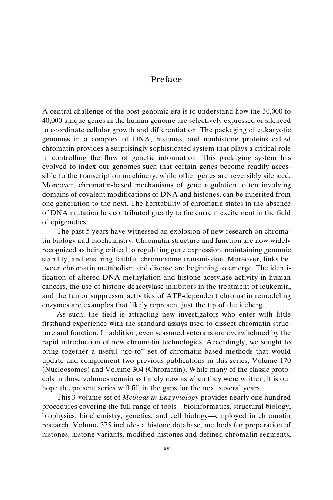
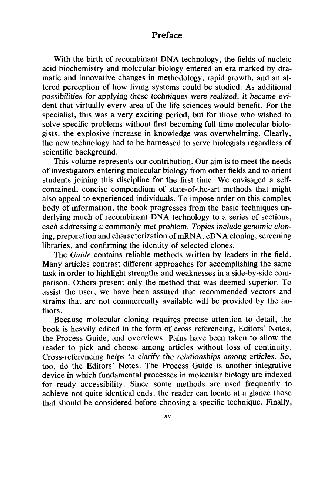
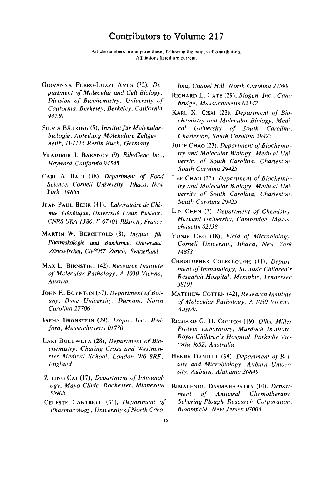
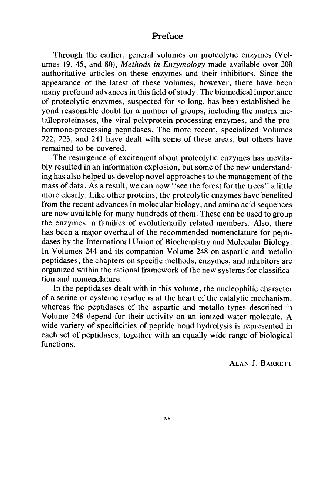
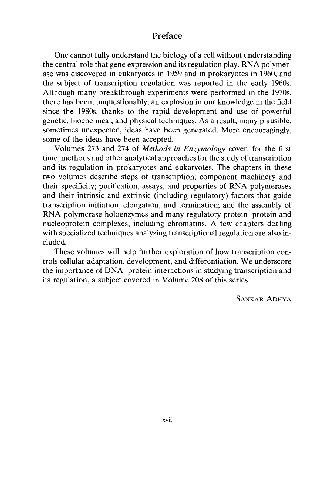
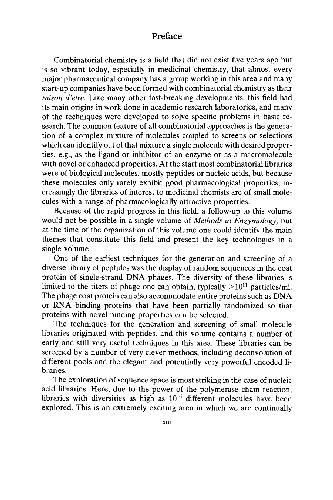
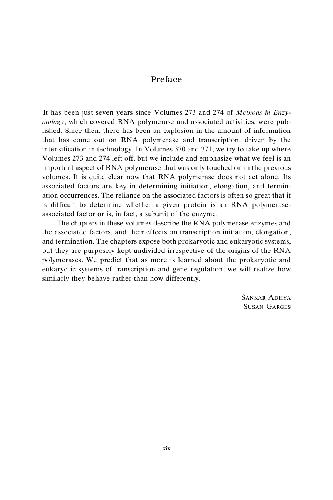
Reviews
There are no reviews yet.